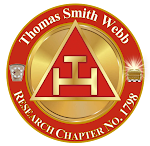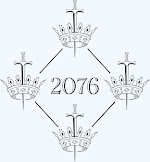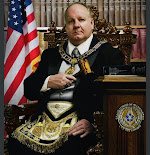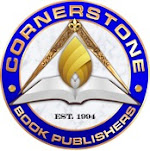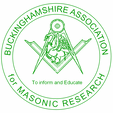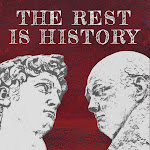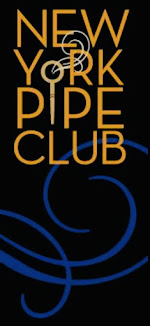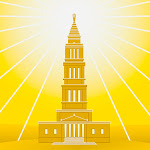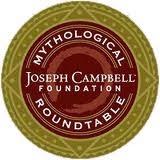 |
| The view of Masons’ Hall in Richmond, Virginia from across East Franklin Street. |
Last weekend, I finally got to visit Masons’ Hall in Richmond, Virginia—add it to your Masonic bucket list. As fraternal destinations go, it’s one of those places that creaks with history and embraces you in a certain atmosphere that defies description. (And long deceased lodge brethren are known to inhabit the building, if you know what I mean.) Attentive readers of The Magpie Mason have noticed a link, along the left side of the page, that has been alerting you for many years to the fundraising effort to maintain this singular historic site.
 |
| Most of the brethren present for CWLR’s communication last weekend. |
Anyway, about twenty of us were in attendance for Civil War Lodge of Research 1865’s Stated Communication last Saturday, the 11th. The lodge holds its meetings around Virginia and beyond, thanks to dispensations, to pair our gatherings with visits to historic sites relevant to the U.S. Civil War. The capital city of the Commonwealth of Virginia certainly is an apt choice for such a calling, but rather than delve into the saga of that conflict, this time we celebrated this engrossing building with a detailed tour and an in-depth discussion of what has happened within its walls.
Even Edgar Allan Poe appears in the lodge’s story. While not a Freemason, he became part of Lafayette’s entourage, so he was on hand for the dignitary’s visit. His mother, an actress, is known to have performed at the lodge shortly before her death in 1811 at age twenty-four. In 1860, the Prince of Wales—the future King Edward VII and future Freemason—toured the lodge building. You have to expect these things when you’re situated for centuries at the crux of so many notable persons and events, and the stories of the lodge’s brethren deserve their own recounting.
 |
| The East of the lodge room. |
 |
| I think it was said this was acquired in the 1920s. |
 |
| There’s a chapter room on the second floor. |
My thanks to both Bro. Joyner, for the post-meeting in-depth guided tour, and to Bro. Crocker, for the pre-meeting look around. It is an amazing place which I hope to visit again.
 |
| Apron of Thomas U. Dudley, 1834. |
I have many more photos and memories, but blogging takes too much time. Civil War Lodge of Research 1865 will meet again Saturday, December 6 at our home lodge, Babcock 184, in Highland Springs to celebrate our thirtieth anniversary. See you there.


















